While this can be a stressful time, our priority is to help you maintain a safe home with repairs done right. Sewer backup cleanup is one area we can help with. We have qualified local contractors on standby to help you with your household emergency.
Wastewater coming back into your home is not a pleasant experience for obvious reasons. However, beyond the smell and unsightly mess, it can pose as a danger to the health of your family. This is because bacteria from the water can spread quickly through the air and surfaces. This water can also cause damage to your flooring, walls, appliances, and structural surfaces within minutes. Beyond this, increased moisture in your home can cause mold growth. These reasons are why our team at Action 1 Restoration considers this an emergency that should be handled quickly and with expert knowledge on the appropriate restoration and cleanup procedures.
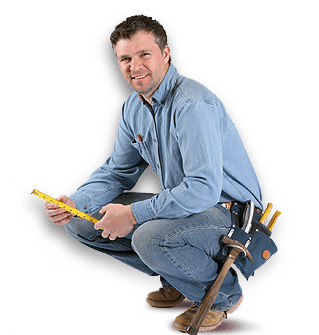
What You Can Do While You Wait

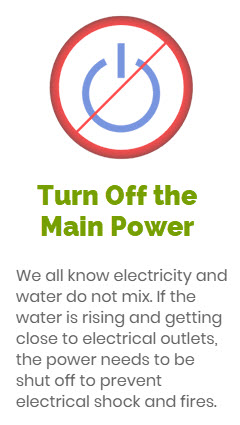
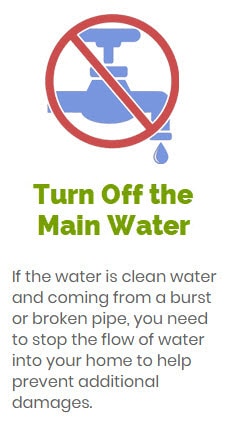
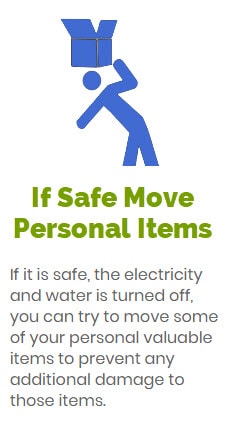
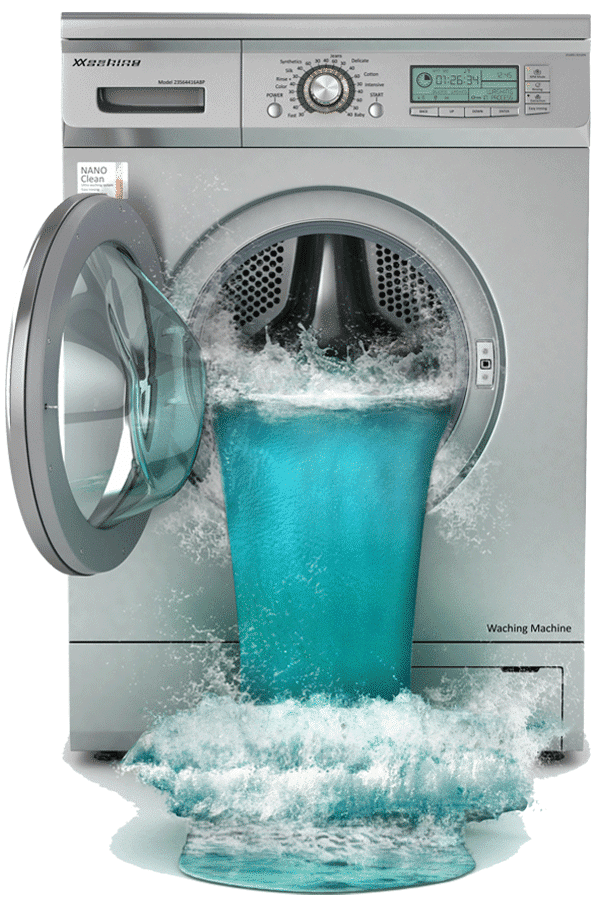
What is a Sewer Backup?
Every home is designed with sewer lines that lead wastewater from showers, toilets, sinks, bathtubs, and washing machines out of the home. While these tend to work smoothly most of the time, some issues can cause them to become clogged and damaged. Once this happens, wastewater from the sewer line can eventually push back into the home through toilets, sinks, and other vessels.
Cleanup vs Removal vs Restoration
Cleanup
When it comes to handling sewer backup, cleanup is the first step in restoring the health and integrity of your home. Removing excess wastewater on the floor so moisture is quickly eliminated should be a top priority. After this, powerful disinfectants are necessary for eliminating dangerous bacteria.
Removal
During the cleanup process, removal of debris must be done properly. The best way to do this is by shoveling debris into plastic bags or removing any impacted materials as soon as possible. Additionally, a wet/dry vac may be used to quickly remove water without having to use towels or buckets.
It's important to have the entire area clear of debris and wastewater so the root cause of the problem can then be addressed. In most situations, it's best to have an experienced professional take care of the sewer lines as to not cause more damage. This could be as simple as a quick clog removal, however, this varies by home.
Restoration
The restoration process can begin once the sewer lines have been repaired and there is no additional risk of backup. Most restoration professionals will begin by removing the moisture and any materials that are damaged beyond repair. After this, they will sanitize, remove smells from the room, and replace materials. The goal of restoration is to restore the home to the condition it was in before the sewer backup took place.
How Our 6 Step Restoration Process Works
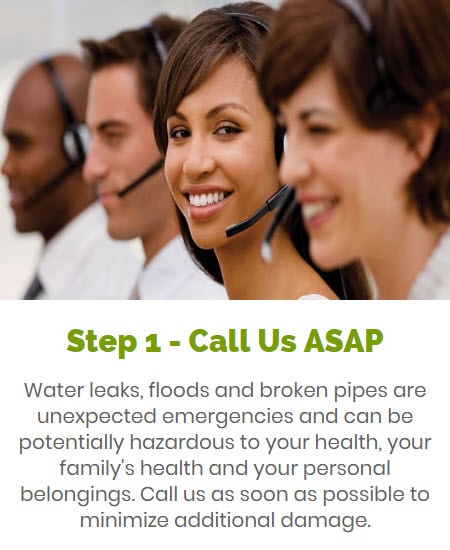
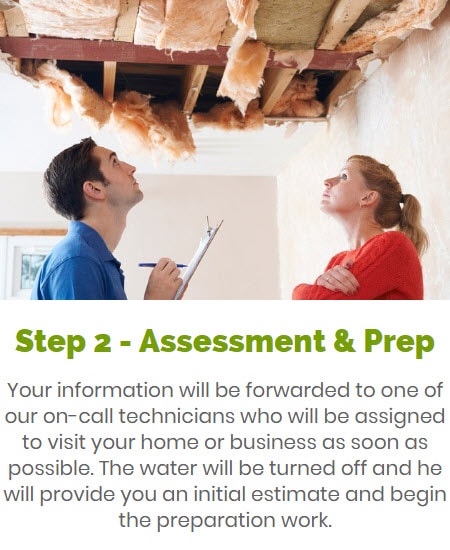
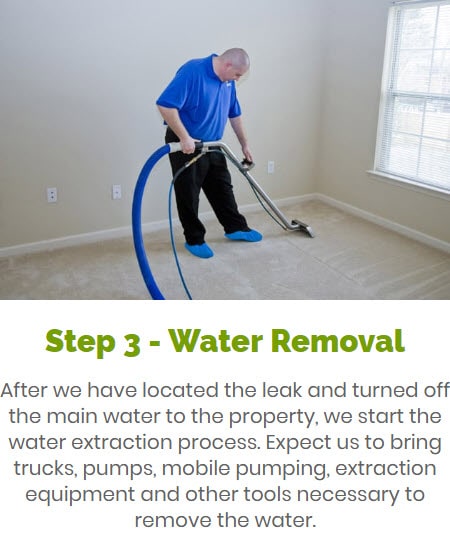
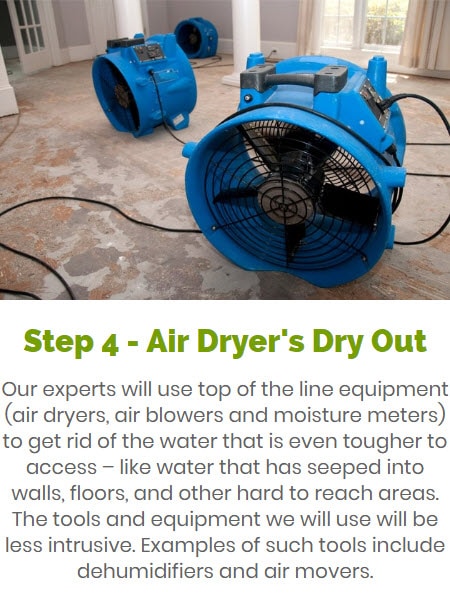
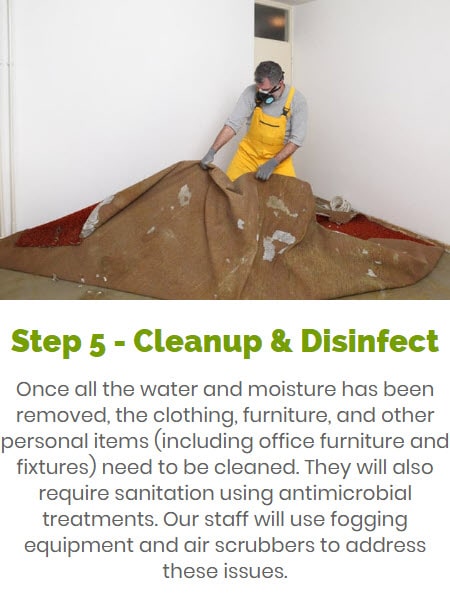
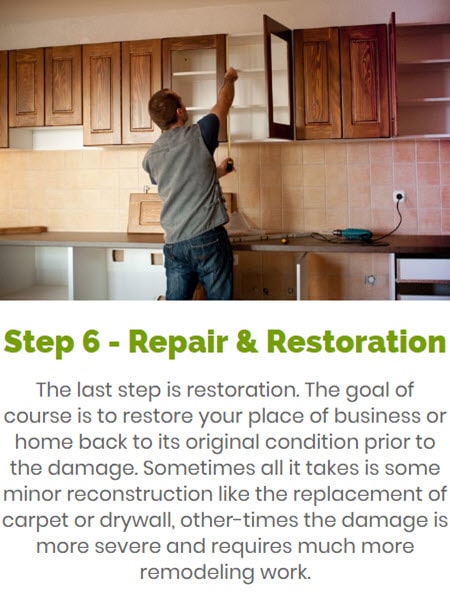
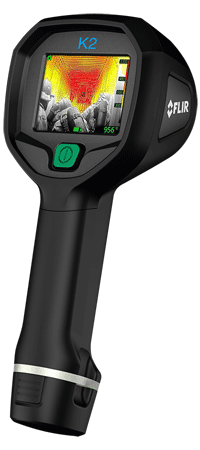
When to Call for Professional Help
If you ever notice the following signs of trouble, it's important to call a professional for help right away. A restoration tech will have the experience, knowledge, and tools that are necessary to determine what's going on right away.
Slow Draining
When you get out of the shower, do you notice it takes a long time for the water to drain? Or, do you notice the toilet takes a long time to complete the flushing process? Slow draining throughout your home is a problem that will not fix itself. In fact, it can worsen over time and may eventually lead to a sewer backup occurring when you least expect it.
Waste Backs up in Other Areas
Before a complete sewer backup happens, many homeowners note that they've seen wastewater appear in sinks when they have flushed the toilets. Or, they have seen wastewater appear in the toilet when they run the washer. Any time wastewater comes back into your home it's a sign of a major problem and should be addressed immediately.
Clogging
If you're getting rid of clogs in your toilets or sinks regularly, then there is very likely a deeper problem going on. If traditional clog removal techniques aren't working, then you'll need the help of a professional to determine what's going on deeper in your sewer line.
Our Expert Sewer Restoration Services Follow These Steps:
At Action 1 Restoration, we work with experienced professionals who take sewer backups seriously. We realize the dangers they can pose, which is why we follow the restoration steps below:
1. Remove Sewage Water and Debris
A restoration professional will first outfit themselves with the appropriate personal protective gear. From here, they will begin removing the sewage water with a wet/dry vacuum or other machines designed specifically for use with water. For debris that cannot be vacuumed, it will be shoveled into plastic bags to be disposed of safely and effectively.
2. Clean the Area
Disinfecting the impacted area is crucial in the restoration process. This will eliminate dangerous bacteria so the risk of illness is minimized. This will generally include brushing the surface with a bleach solution that kills bacteria and germs on contact.
3. Eliminate Moisture
Although water will be removed in the first step of the process, this won't remove all moisture from the materials. For this reason, professionals will open all windows and run powerful dehumidifiers to dry out the space of all moisture. Doing so will prevent the growth of mold and minimize decay.
4. Remove Materials
Any materials that have been damaged beyond repair will be removed and then replaced to restore the integrity of the home. This could mean flooring, cabinets, walls, baseboards, or other parts of the impacted room will temporarily be torn apart. If you have furniture or goods that have been impacted, you will have to decide if you should have them cleaned or replaced. This is similar to items that are contaminated with asbestos.
5. Replace and Restore
The last step in restoration after a sewer backup is to replace damaged materials so the room looks like it did before the damage ever occurred. Fortunately, by working with a professional, you'll have peace of mind knowing this was done right.

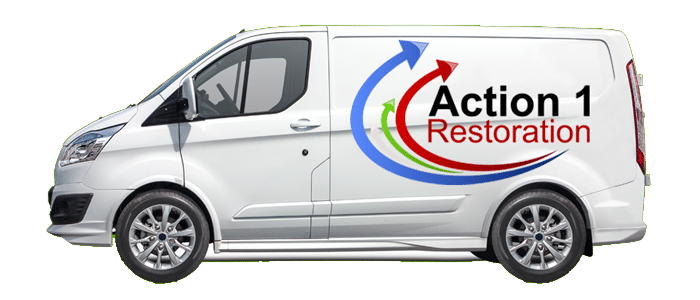
Lets Talk About Your Restoration Project
All of these sewage cleanup issues cannot be left for “later", they are serious dangers which need to be addressed by professionals with experience and need to be addressed immediately. That is why Action 1 Restoration can provide biohazard restoration services within minutes, day or night, we are just a phone call away.
How to Clean a Sewage Backup, a DIY Guide
If you want to try and clean up a sewer backup on your own, the following steps should be taken:
- Wear Personal Protection Equipment - This should include waterproof boots, a face covering, a hazmat suit, gloves, and goggles.
- Ventilate the Area - Open windows, turn on fans and run a dehumidifier to remove excess moisture in the air.
- Equipment That Can Be Used -
Shop-Vac - Shop-Vacs are specifically designed to remove water and can be excellent tools for quickly picking up water.
Pump - Water removal pumps can be used to move large volumes of water away from yards and homes that have been impacted by a sewer backup.
- Proper Disposal - Always place the debris from the sewer and water-damaged materials into plastic bags that can be sealed. Check with your city to see where this debris and any impacted materials should be sent for disposal.
- Cleaning and Disinfecting - Use a solution of 1 oz of bleach mixed with one gallon of water to clean all impacted surfaces. Rinse with clean water and then dry after the surface has been completely disinfected.
Why Call the Action 1 Restoration Experts
Managing a sewer backup cleanup in your home can be stressful. When you call our team at Action 1 Restoration Experts, you can leave the job to experienced professionals who have your back. We will make sure your technician takes care of your home with attention to detail and safety in mind. This can make the cleanup and restoration process less stressful so you get your home back in no time. Let us help you when you need help the most!
